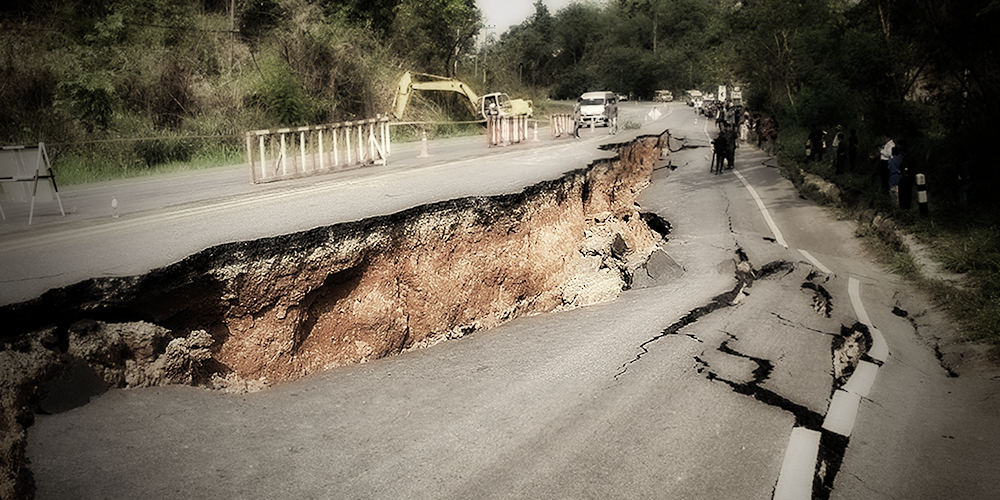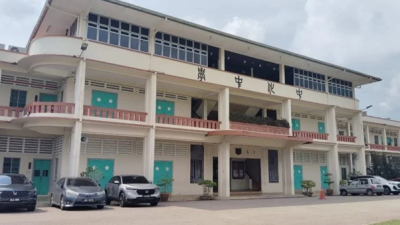
Malaysia has always been touted as blessed land geographically, meaning our nation experiences a minimal amount of natural disasters that could be detrimental to our community and economy.
This is due to our geographical location, as we are situated away from the Pacific Ring of Fire spanning the entire Pacific Ocean along the coastlines. This means we have no volcanoes within our country.
Furthermore, despite Southeast Asia being comprised of multiple tectonic plates that are tectonically active and have a higher chance of causing earthquakes, Malaysia is relatively far away from plate boundaries.
This means Malaysia is unlikely to experience heavy damage caused by interplate earthquakes (which happen near plate boundaries) that account for 90 per cent of total earthquakes in the world, as opposed to our neighbour Indonesia (Nazaruddin & Duerrast, 2021).
This has created a sense of safety among the population in Malaysia, with the belief that the country is free from destructive natural disasters, and that there is no need to prepare for earthquakes.
However, this could not be further from the truth.
According to Nazaruddin & Duerrast (2021), Peninsular Malaysia recorded 59 earthquakes between 1922 and 2020.
In East Malaysia, Sabah in particular reported 67 light to moderates earthquakes between 1900 and 2019 (Tongkul, 2021).
One of the more recent earthquakes that Sabah endured was the magnitude 6.0 earthquake that struck Ranau in June 2015, killing 18 people of different nationalities (The Straits Times, 2015).
Some might think that 59 earthquakes in 98 years is not enough to raise public interest, or that Sabah’s earthquakes are an issue specific to Sabah, requiring additional attention only there.
While it is true that Sabah is seismically more active than Sarawak and Peninsular Malaysia, we cannot overlook the fact that 40 of the 59 earthquakes in Peninsular Malaysia occurred between 2007 to 2020 (Nazaruddin, 2021).
The sudden spike in seismicity and intraplate earthquakes, according to researchers, could be due to fault reactivation triggered by multiple interplate earthquakes near Sumatra (Nazaruddin & Duerrast, 2021).
This explanation holds up. After the September 2007 Sumatra earthquake (magnitude 8.4), Malaysia experienced nine earthquakes with magnitude ranging from 2.7 to 3.4 within the span of November 30 to December 31.
Another such instance was after the September 2009 Sumatra earthquake (magnitude 7.6), where Malaysia recorded nine earthquakes of magnitudes ranging from 0.9 to 3.0 between October 7 and November 30.
These earthquakes are harmless due to their low magnitude on the Richter scale, as anything below a magnitude of 5.0 is less likely to cause any damage.
However, experts have warned that there is a possibility of an earthquake equal to or greater than this occurring in Peninsular Malaysia (Nazaruddin, 2021; Nazaruddin & Duerrast, 2021; Sinar Daily, 2022; Kamarudin et al., 2023).
The Ministry of Natural Resources, Environment and Climate Change (NRECC) has also stated that Malaysia has the potential for earthquakes, without specifying the magnitude (The Sun, 2023).
After the 2015 tragedy in Sabah, the government introduced the National Annex: 2017 and adopted Eurocode 8, which is essentially a building code and standard for developers to follow to ensure their buildings are earthquake-resistant.
The National Annex: 2017 also included a seismic hazard map, showing the peak ground acceleration (PGA) of different part of Malaysia.
Combine with our knowledge of fault lines, this map can be used not only for land-use planning but also to identify which areas of Malaysia are more likely to experience earthquakes strong enough to cause significant damage.
In Peninsular Malaysia, the highest PGA recorded is 9%g in various locations, including Manjung in southern Perak and Bukit Tinggi, northeast of Kuala Lumpur. The capital, Kuala Lumpur, has a PGA value of 7%g.
In Sarawak, the highest PGA recorded at 9%g in Niah, with the majority of the landmass recording PGA values lower than 4%g.
However, in Sabah, most of the land mass has recorded PGA values above 4%g, with Ranau, Lahad Datu and Kudat reporting 15%g, 16%g, and 14%g, respectively.
According to the Department of Mineral and Geoscience (JMG), any earthquake with a PGA value above 6%g could damage ordinary buildings, forming large cracks that affect their stability.
Earthquakes with PGA values above 12%g risk causing severe damage to ordinary buildings, including broken frames and beams.
Therefore, dismissing the threat of earthquakes would be irresponsible, given the potential damage they could cause.
The National Annex: 2017 set standards for developers to ensure all buildings constructed thereafter are capable of withstanding earthquakes to a certain extent.
However, buildings that were built and approved before the publication of the standard in 2017 are unlikely to be earthquake-resistant.
Additionally, although the National Annex: 2017 was published in 2017, the standard only became a mandatory requirement under the Uniform Building By-Laws after an amendment in 2021 (The Star, 2023).
This means that any building approved or constructed between 2017 and 2021 was not required to fully adhere to the standard, which raises the possibility that some newer buildings may not be earthquake-resistant.
An inspection to assess whether buildings can withstand earthquakes is essential, and for those that are not earthquake-resistant, there is a need to strengthen them to improve their structural stability.
This will be a particularly large-scale operation, requiring a massive amount of manpower.
Thus, given that many areas with high PGA values are also densely populated, it would be more prudent to begin with those areas, as high PGA values are often associated with higher earthquake magnitude and intensity.
In addition to seismic retrofitting of old buildings, it is also necessary to educate the public about the potential dangers beneath our feet.
Studies have shown that disaster preparedness greatly enhances a community’s ability to cope during a disaster and speeds up the recovery afterward (Kamarudin et al., 2023).
Moreover, researchers have found that people who are better prepared for disasters suffer fewer damages and loses (Oral et al., 2015).
However, they also discovered that individuals who have never experienced an earthquake are significantly less prepared compared to those who have faced one before.
Although the 2015 tragedy in Sabah occurred nine years ago, only 56.3 per cent of geography teachers in Ranau have a basic understanding of earthquakes, indicating low public awareness of the issue even in areas that have previously experienced seismic activity (Bikar et al., 2021).
Relevant agencies, whether the National Disaster Management Agency (NADMA), the Malaysia Meteorology Department (MMD) or others, need to intensify education programmes, especially in schools located in high-PGA areas like Ranau, Lahad Datu and Bukit Tinggi.
Unfortunately, in terms of earthquake mitigation and preparedness, strengthening buildings and increasing public knowledge are the only viable approaches, as scientific prediction and forecasting of earthquakes are considered highly improbable.
Although scientists are experimenting with machine learning to improve data analysis for earthquake prediction, its practicality is still under intense scrutiny.
Thus, relevant agencies and first responders must be well-equipped and prepared for search-and-rescue missions should such a tragedy occur.
Since earthquakes often trigger secondary disasters such as landslides or tsunamis, NADMA must address its manpower issues and other challenges as soon as possible to avoid shortages during a crisis (Astro Awani, 2022).
As much as the public would want to believe that earthquakes are not a concern for Malaysia, scientific evidence suggests otherwise.
Therefore, at the very least, the government needs to prepare the public to deal with such disasters in any way possible.

(Chia Chu Hang is a Research Assistant at EMIR Research, an independent think tank focused on strategic policy recommendations based on rigorous research.)
ADVERTISEMENT
ADVERTISEMENT







































